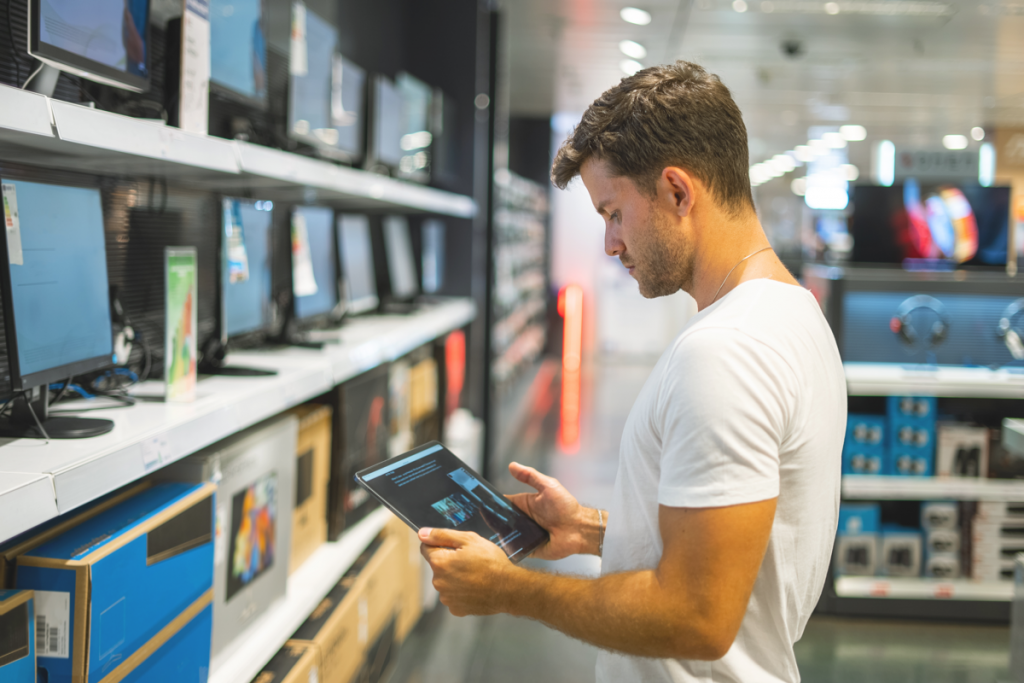Fecha del artículo 15/03/2023
Technological advances and lifestyle changes in recent years are challenging some of the paradigms that the retail industry has traditionally used in its relationship with consumers.
It is no longer enough to make an online channel available in parallel to the physical stores, but it is necessary to integrate them organically and allow each person to choose which one to use for the different interactions, thus maximizing the satisfaction of each consumer.
Customer journey management has become a key competitive factor, enabling increased conversion rates and customer engagement.
In the last decade, retail companies have developed omnichannel communication strategies with their customers, but they have done so with a focus on channel availability rather than customer experience. Thus, organizationally, functionally and technically, silos have been created for each of the channels. Offers, purchases and other interactions that a customer makes in one channel are not known to all other channels, based on the assumption that people will use the same channel for all interactions related to a purchase.
This conception of omnichannel has generated benefits for both retail and consumers, but proves to be insufficient with the current expectations that people have about the shopping experience.
These changes in expectations and behaviors were greatly accelerated by the pandemic and the increased penetration of digital channels.
Consumers want personalized, seamless and value-driven experiences, both in physical stores and online. They do not want to perceive differences in choosing one channel or another, and expect to complement their purchase with models such as click and collect, in its various implementations.
As a sign of the evolution of the omnichannel concept, the term ‘phygital’ has begun to spread, which seeks to represent consumers’ expectations of being able to take advantage of the best of the physical and digital worlds, generating interactions that can start with virtual searches, fitting room reservations and payments without interaction with store personnel, as well as home deliveries or in-store pickups.
Just as hybrid stores and dark stores are becoming more common, companies have had to start transforming some of their physical stores into experience centers to enrich physical interactions and contact with the brand.
The personalization of each client’s trips requires a greater knowledge of their preferences and tastes, which requires a permanent concern in understanding their behavior as well as having the necessary information available.

Retail 3.0 Challenges
In order to achieve one-to-one personalization of the customer journey, retail companies will have to face a high set of organizational and technological challenges, among which we can mention:
– Low organizational agility
– Poor data sharing between the various areas of the company (sales, services, marketing and payments, to name a few).
– Existence of technological silos that prevent the enrichment of each client’s information, as well as the reuse of the capacities already generated.
– Management of heterogeneous, on-premise, hybrid and cloud technology architectures
– obsolete technology and legacy infrastructure, isolated and not visible
– Internal opposition to the use of new technologies and business models (cloud, SaaS, etc.).
– Process automation
– Leveraging new technologies, such as those based on artificial intelligence and machine learning (voice assistants, chatbots, in-store robotic assistants and drone raptors), those based on IoT devices and systems (security, tracking, location and statistics), among others.
Many industries that have had to face similar challenges have been tempted to use ‘big-bang’ organizational and technological change strategies, which seek to change everything overnight and whose processes are centrally controlled by top management. In a high percentage of cases, this strategy results in projects costing several times the estimated cost and duration.
At other times, more organic approaches are used, in which the old and the new are allowed to coexist, and the gradual but steady growth of the new is encouraged.

API-based infrastructure – Expertise and agility
Achieving a unique and personalized customer journey experience requires real-time orchestration of capabilities and information, as well as integration with new technologies and architectures.
Fostering an architecture that is structured in different functional and technical layers will provide the necessary agility and control to put technology at the service of the business.
Whether using SOAP or REST protocols, systems and services must expose their capabilities through APIs so that others can take advantage of them.
With clearly defined APIs and the possibility of knowing all the capabilities exposed, different teams can take their creativity forward.
An API-based approach will also allow you to leverage third-party capabilities exposed in the cloud and thus innovate in an effective and agile way.
All this has transformed APIs, originally understood as tools for developers and IT, into a strategy for generating new business revenue.
Reevolute
There is a growing need for technological solutions that facilitate the orchestration and integration of systems in real time, as well as the use of information from each interaction. Reevolute’s mission is to help our clients by providing solutions that give them competitiveness in their businesses, reducing technological gaps and allowing more and more ideas to materialize.
We want to contribute to the 4th industrial revolution, so that all business ideas see the light of day.

